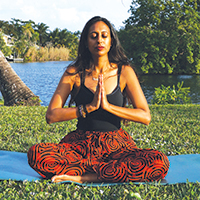The 8 Limbs of Yoga
 |
|||
| The 8 Limbs of Yoga | |||
|
We all know what Yoga is, right? It’s a great exercise routine to keep fit and become more flexible. If you agreed with the previous statement, take a deep breath and read on because Yoga is so much more. Yoga actually translates to “union” (referring to the unity between the individual soul with the universal soul) and is an ancient system of 8 different practices. The sage Patanjali is credited with organizing the pre-existing knowledge and compiling it into the Yoga Sutras (threads), providing a systematic approach to creating a divine connection between the conscious and the subconscious. Let us review these eight limbs. The first two limbs, called Yama (self-restraints) and Niyama (observances), detail how we should be treating ourselves and others through internal and external purification. The practice of self-restraint is, often times, the most difficult to master since it requires a great amount of discipline when interacting with others. One cannot attain true inner bliss and serenity without overcoming the most basic material desires that we are so quick to succumb to in Maya, or the illusions of this world. The five components of Yama highlight the external dimension of reaching spiritual enlightenment. On the other hand, thefive elements of Niyama reflect a more inner struggle on that same path. Deep inward reflection allows for the mental discipline needed to overcome distracting or negative thoughts.
|
|||
|
|||
‘



 The next limb is Asana which are the physical postures, or poses, of yoga. The literal translation of asana is ‘seat’. In Swami Vivekananda’s translation of Patanjali’s Yoga Sutras, “sthirasukham aasanam” is defined as a posture which is “firm and pleasant”.
The next limb is Asana which are the physical postures, or poses, of yoga. The literal translation of asana is ‘seat’. In Swami Vivekananda’s translation of Patanjali’s Yoga Sutras, “sthirasukham aasanam” is defined as a posture which is “firm and pleasant”. About the Author
About the Author























